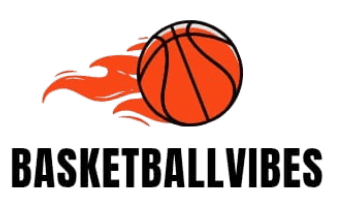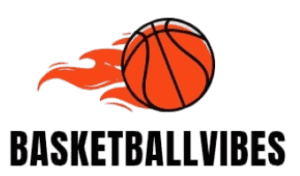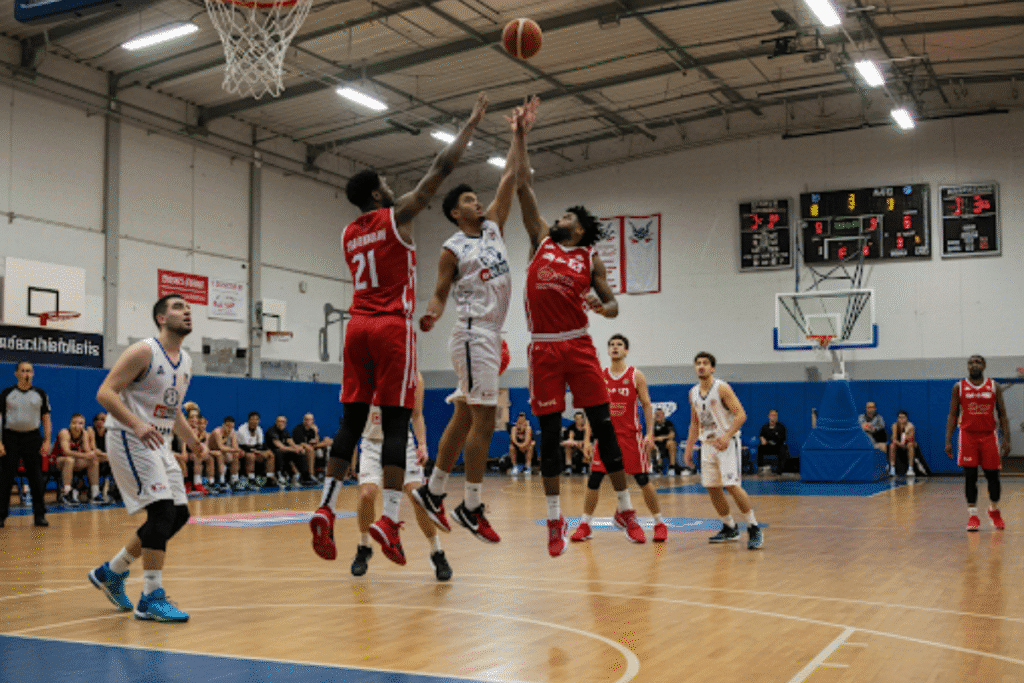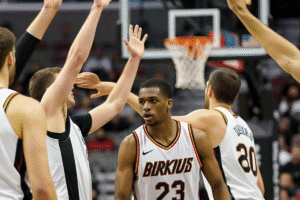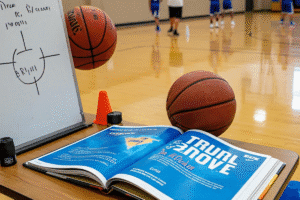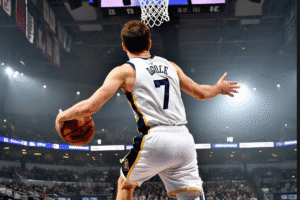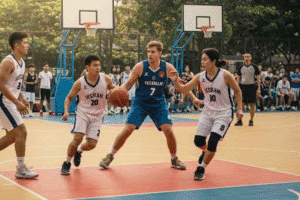Alright, fellow hoopers, let’s talk basketball! It’s not just about flashy dribbles and swishing three-pointers. There’s a whole lot more to the game than just raw skill. I’m talking about basketball IQ, understanding your role, and playing smart. And hey, let’s be honest, who doesn’t want to make a lot of money or just enjoy being really good at basketball? I know I do!
So, let’s dive into some key concepts and positions that’ll help you step up your game.
The Mind of a Point Guard: Pace, Picks, and Personnel
First up, let’s talk about the point guard. This position is all about controlling the tempo of the game.
Pace: The Rhythm of the Game
-
- As a point guard, you’re the conductor of the offense. You’ve got to know when to push the pace and when to slow it down. It’s like being a DJ; you’ve got to feel the vibe.
Reading the Game:
-
-
- If you’ve got an advantage, push it! A clear lane, a 3-on-1, or a teammate streaking down the court? Go for it!
- Psychological momentum matters. If your team’s on a roll, keep the energy high. If you’re struggling, sometimes pushing the pace can get you an easy bucket.
- Fatigue is real. If your team’s gassed, slowing it down might be the smartest play.
- Time, score, and situation. Late in the game with a lead? Chill. Down by a lot with little time? Push it!
- Your personal style matters. If you are fast, then use that; if you are slower, then use that to your advantage.
-
Yo, point guards—combo guards like James Harden and Shai Gilgeous-Alexander are taking over. These hybrids mix scoring explosions (Harden’s step-back) with playmaking wizardry.
Try the ‘Two-Ball Dribble’ drill: Pound two balls simultaneously while reading the court. It’ll train you to score AND pass under pressure, just like Steph Curry in the 4th quarter.
Remember, pace isn’t always about sprinting. Sometimes, it’s about a quick push followed by a composed slowdown. Think Shai Gilgeous-Alexander. He’s a master at this.
Passing the ball up the court is faster than dribbling, so use that to your advantage. In the half court, slow down on the pick and roll to allow the play to develop.
Pick and Roll Reads: The Art of the Screen
-
- The pick and roll is a fundamental play in today’s basketball. But it’s not just about running the play; it’s about reading the defense.
- Your reads will vary based on your skill set. Are you a sharpshooter? Pull up for three. A slasher? Attack the rim.
- Rejecting the screen can create chaos.
- Always look to score first.
- Hit the rolling big man.
- Reading the second layer of defense and the tag defender is key.
- Use fakes and eyes to create opportunities.
- Don’t always look for the assist; look for the “hockey assist.”
- Creating advantages is the point guard’s job.
Creation Lanes: Opening Up the Court
Understanding creation lanes is about knowing where to attack to open up opportunities.
-
- Baseline Drives: Attacking the baseline often catches defenders off guard, opening up cuts and kick-outs.
- Moving Across the Court: Attacking diagonally can create 45 cuts and open up same-side kicks.
- Driving Middle: Getting to the middle forces the defense to collapse, creating open shots.
- Remember, you’ve got to be a scoring threat to make these lanes effective.
Know Your Personnel (KYP): The Intricacies of Teamwork
-
- It’s not just about your skills; it’s about knowing your teammates.
- Understand their strengths, weaknesses, and tendencies.
- Adapt your play to their mental state.
- Don’t throw a hard pass to someone who can’t catch.
- This is the quality that separates good point guards from great point guards.
The Center: The Heart of the Paint
Centers ain’t just dunk machines anymore, folks. Modern bigs like Nikola Jokić and Joel Embiid have flipped the script—they’re dropping dimes from the high post and splashing threes like guards. Ever heard of a “stretch five”? That’s a center who pulls defenders out to the three-point line, creating driving lanes for teammates. Want to practice this? Try the “Pick-and-Pop” drill: Set a screen, then sprint to the arc for a catch-and-shoot three.
Dominating the Paint: Power and Precision
-
- Centers need to be aggressive when attacking the rim. Dunk it with force!
- If a defender is stronger, use a quick spin move.
- Go up with two hands and two feet off the ground for stability.
- Use floaters when needed, and make sure that you use two hands.
- Be a great help side defender, and time your blocks.
- Always watch the help side.
- Cut to the basket hard.
- Be ready for offensive rebounds.
- Centers now shoot 3-pointers, so practice them.
- Be fearless.
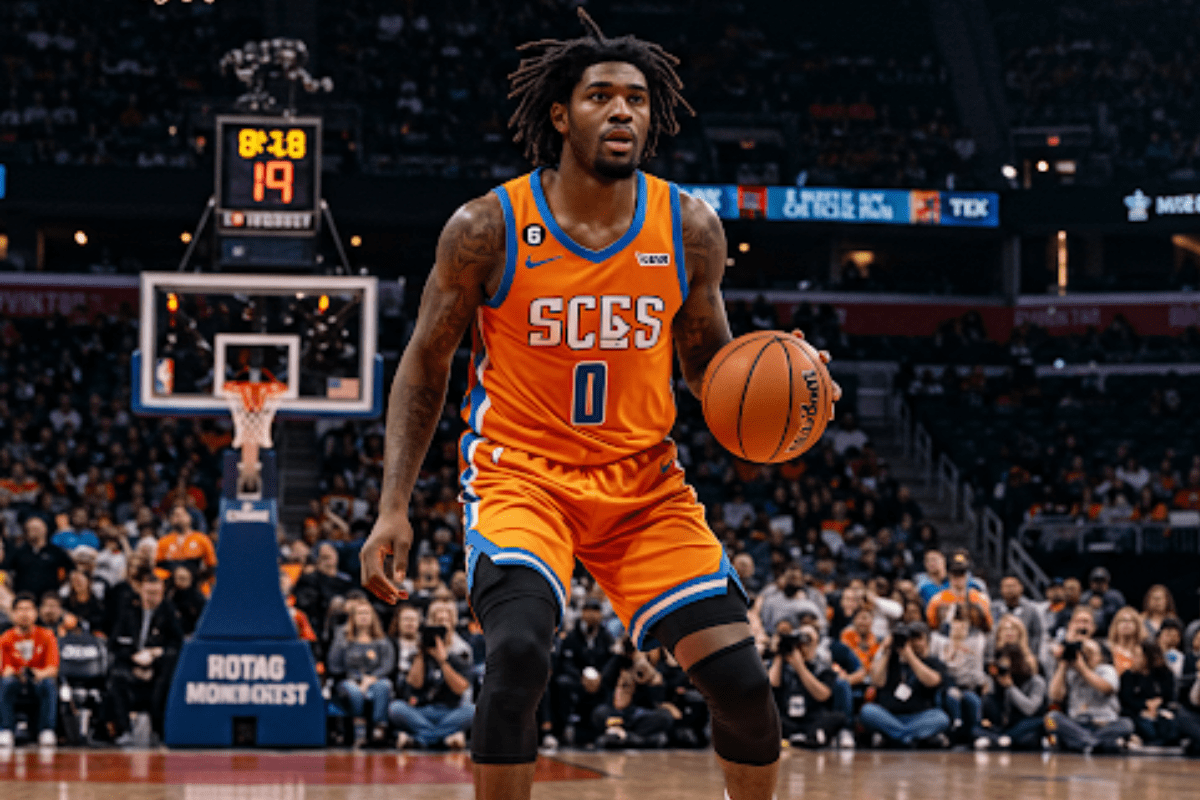
Center Dominates Paint
Pro tip: Study Brook Lopez—he went from post bruiser to shooting 34% from deep for the Bucks!
The Power Forward: More Than Just Muscle
Power forwards used to be all about elbows and rebounds. Now? ‘Stretch fours’ like Dirk Nowitzki and Karl-Anthony Towns live at the three-point line. Defenders hate this one trick: Set a screen, pop out to the corner, and let it fly.
Fun fact: Dirk’s fadeaway was so unguardable, it inspired a generation of shooting bigs.
The Small Forward: The Versatile Weapon
The small forward is the ultimate jack-of-all-trades.
Versatility is Key:
-
- Small forwards need to be able to do a bit of everything: dribble, shoot, post up, and defend.
- They’re not the primary ball handler, but they need to be able to handle the ball.
- They must be able to shoot from the outside and drive to the basket.
Athleticism and Size:
-
- They’re typically the most athletic players on the court.
- They combine athleticism with size and length.
Instinct and Basketball IQ:
-
- They need to be able to anticipate plays and make smart decisions.
- Knowing when to shoot, drive, or pass is crucial.
Selflessness:
-
- They’re not always the primary scorer, but they need to be willing to do whatever it takes to help the team win.
- They need to be able to play physically in the lane.
Roles and Responsibilities:
-
- Drive to the basket and score.
- Be able to shoot the 3.
- Be a great defender.
Oh, and small forwards like LeBron James and Kevin Durant aren’t just ‘wing players’—they’re point forwards, a hybrid role where they act as primary playmakers. Think of LeBron bringing the ball up, calling plays, and still posterizing folks at the rim.
To train like a point forward, work on ‘positionless’ drills: Grab a rebound, push the ball coast-to-coast, and finish with a layup or kick-out pass. It’s how Scottie Pippen averaged 5+ assists in the ‘90s Bulls dynasty!
The Outer and Inner Positions
Outer Positions:
-
- Point guard: Runs the offense.
- Shooting guard: Shoots from long distances.
- Small forward: Versatile player who can do it all.
Inner Positions:
-
- Power forward: Shoots near the basket and from the free-throw line.
- Center: Plays in the key, rebounds, and defends.
Remember, basketball is a team sport. Find the position that suits your skills and body type, but don’t be afraid to be versatile!
Conclusion
Basketball’s getting weird (in the best way). Teams like the Warriors and Heat are ditching traditional positions for positionless basketball—where players do it all. Draymond Green? He’s a 6’6” center who conducts the offense. Giannis? A 7-foot point guard with a Eurostep from hell. This ain’t your grandpa’s game.
How to adapt:
- ‘Swiss Army Knife’ Drill: Rotate through roles in practice—run point for 5 minutes, then crash the boards as a center.
- Watch the 2023 Nuggets: Jokić, a center, led the team in assists. Positionless isn’t a trend—it’s a championship strategy.
